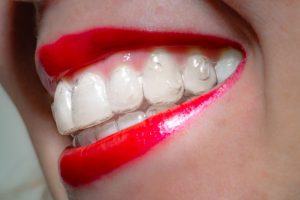 After feeling self-conscious about your crooked teeth for years, you’ve finally decided to do something about them. Thankfully, you’re no longer limited to just getting braces to straighten your teeth. These days, many adults choose Invisalign because it’s discreet, comfortable, and extremely effective. Many assume they’ll just be wearing clear plastic trays for the next few months, but then they’re surprised when their orthodontist says that they need to have small attachments placed onto their teeth. So, this begs the question, “Why are attachments needed sometimes for Invisalign?” Today, you’ll find the answer to this question and more…just keep reading!
After feeling self-conscious about your crooked teeth for years, you’ve finally decided to do something about them. Thankfully, you’re no longer limited to just getting braces to straighten your teeth. These days, many adults choose Invisalign because it’s discreet, comfortable, and extremely effective. Many assume they’ll just be wearing clear plastic trays for the next few months, but then they’re surprised when their orthodontist says that they need to have small attachments placed onto their teeth. So, this begs the question, “Why are attachments needed sometimes for Invisalign?” Today, you’ll find the answer to this question and more…just keep reading!
How Invisalign Attachments Work
While Invisalign doesn’t look like metal braces in the slightest, it actually moves the teeth in the same manner: the trays use a small amount of pressure to slowly shift the teeth into their ideal positions. These movements sometimes need to be very specific and very subtle, so your orthodontist may choose to place a small attachment on certain teeth so your trays apply the right kind of pressure in the right direction. Think of them like little guides. They enable Invisalign to address certain kinds of misalignments that previously were beyond the scope of the treatment. Without them, your only other option might be metal braces!
What Exactly Are Invisalign Attachments?
The attachments are a small amount of dental bonding material applied to specific teeth that create a little bump which directs how an Invisalign tray pushes on a tooth. You’ll definitely be able to feel the attachments when you aren’t wearing your trays, but the bonding material is clear, so they are barely visible. The process to get them only takes a few minutes and is entirely painless—no shots or drilling is required! Before you put on your first set of Invisalign trays, your orthodontist will simply place a dab of the material where it’s needed and then polish it into the appropriate shape.
Will You Need Invisalign Attachments?
It really depends on the current orientation of your teeth. Your orthodontist will let you know when you go in to see them for a consultation. If they recommend getting attachments, just know that they’ll help you achieve your beautifully straight smile as quickly and efficiently as possible. They won’t change your brushing and flossing routine at all, and if one becomes loose or falls off (which almost never happens), you can just call your orthodontist and have a new one put on nice and fast.
With Invisalign, you can dramatically improve the appearance of your smile while no one around you notices you’re undergoing treatment. Even if you end up needing attachments, the only things people will notice are your confident smile and beautiful results. To learn whether or not you could benefit from Invisalign with or without attachments, be sure to consult an orthodontist near you!
About the Author
Dr. Jeffrey Shirck is an award-winning orthodontist who provides high-quality care for patients of all ages. A certified Elite Invisalign Provider since 2017, he’s used the treatment to help countless adults and teens straighten their teeth without metal braces. To learn more about what Invisalign could do for you and what your particular treatment process will be like, you can schedule a FREE consultation at Shirck Orthodontics by clicking here.

